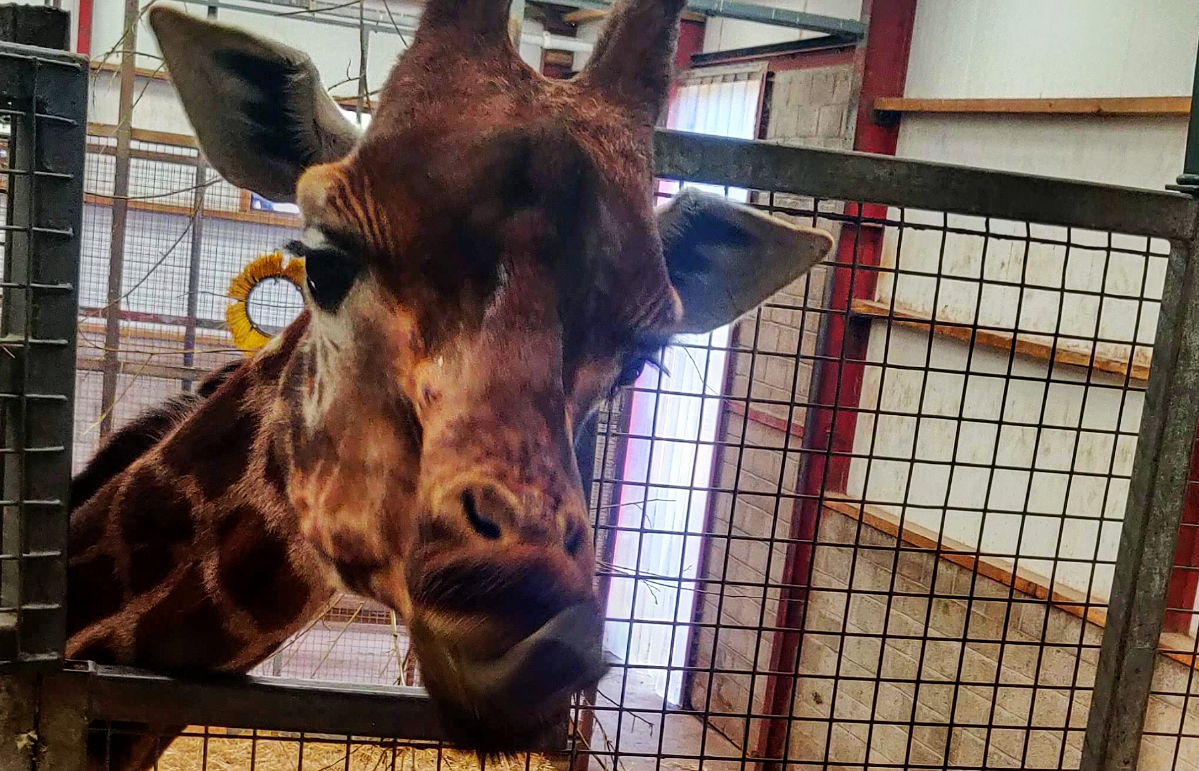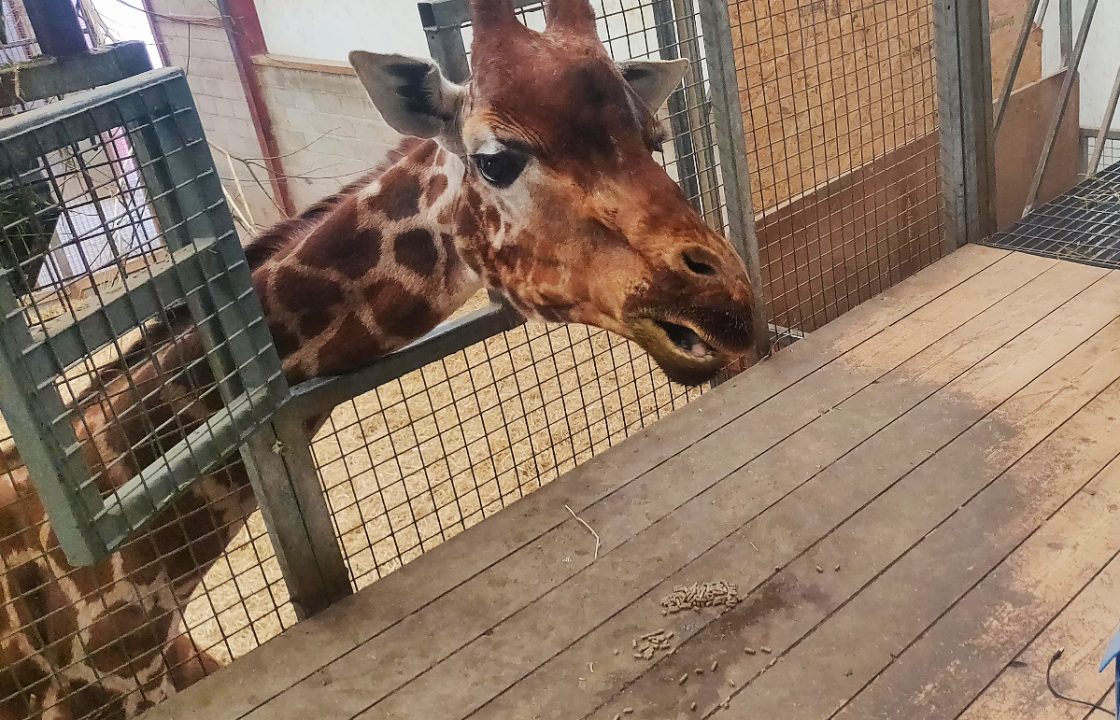A world first interactive enrichment system for giraffes has been developed by Scottish academics and zookeepers.
Researchers from the University of Glasgow collaborated with animal keepers at Blair Drummond Safari and Adventure Park to develop prototype devices which would allow the park’s five giraffes to trigger sounds on demand.
Meeting the needs of giraffes is a longstanding challenge for zookeepers, however, not least because giraffes sleep differently from many other mammals.
Instead of resting for hours overnight, they take frequent brief naps whenever they choose to, sleeping for less than 30 minutes at a time.
 University of Glasgow
University of GlasgowWhile they’re awake during the night, giraffes in captivity sometimes hum to themselves – a sustained low-frequency rumble. Animal keepers and wildlife researchers are not yet sure why giraffes make these noises.
The team set out to investigate whether the giraffes would choose to hear the humming for themselves if they could trigger recordings of the sounds on demand.
They also wanted to examine whether the sound could stimulate the giraffes’ natural behaviours, which might suggest their experience was enriching.
 University of Glasgow
University of GlasgowThe team built two prototype systems which aimed to engage with the animals in ways that they naturally interact with the world.
One system would play sounds when the giraffes headbutted or nudged a toy hung in their enclosure, while the other would trigger audio when the animals stood next to a sensor.
After an initial period where the animals got used to having the devices in their enclosure, the researchers enabled the devices to play sounds whenever the giraffes interacted with the devices.
They heard either a sample of white noise or recordings of other giraffes humming.
 University of Glasgow
University of GlasgowOver a two month period, the researchers observed that the giraffes triggered the proximity system more frequently, but that they interacted longer with the touch-based device per use. The finding could suggest that proximity is optimum for initial attention grabbing in giraffes, while touch sustains engagement better.
The animals showed no preference for either sound type, with their interactions declining once audio was introduced after an initial period where they became familiar with having the devices in their enclosure.
The research is the latest outcome from animal-computer interaction research led by Dr Ilyena Hirskyj-Douglas of the University of Glasgow’s school of computing science.
Dr Hirskyj-Douglas said: “Giraffes are increasingly endangered in the wild, so for wildlife preservation purposes it’s important that we try to make their lives in captivity as rewarding as possible. Previous studies, including my own, have shown that computer systems have real potential to deliver enriching experiences for zoo animals.
“What we set out to do in this first study on interactive systems for giraffes is to try to start to map out how devices might work for them. How could we adapt systems to their preferences, and what might they like to hear when they used the prototypes to trigger sounds?
“As it turned out, it seems the sound of other giraffes humming isn’t as appealing as we might have expected, which gives us an important data point to move forward with. It could also help unravel the mystery of why giraffes in captivity make this humming sound, which is similar to the vocalisations they make to each other but could have another purpose which they don’t necessarily enjoy hearing played back to them.”
Blair Drummond Safari Park’s research coordinator Alasdair Gillies said: “Using interactive systems as a form of enrichment represents an innovative and exciting approach to empowering animals, granting them control and choice over their environment and how they spend their time.
“Conventional enrichment methods often rely on food as the primary motivator, which can be restrictive. We take pride in contributing to the ongoing effort to expand the type of experiences we can offer our animals.”
Follow STV News on WhatsApp
Scan the QR code on your mobile device for all the latest news from around the country


 University of Glasgow
University of Glasgow
























